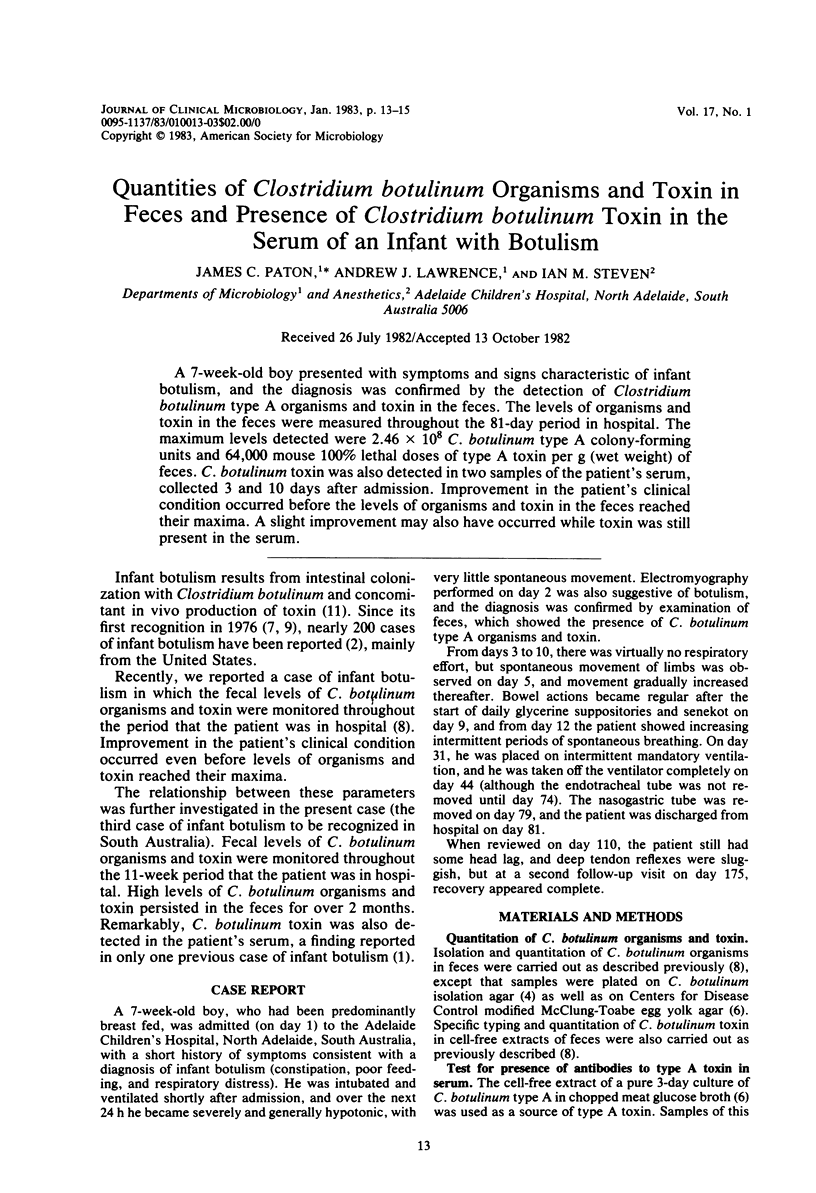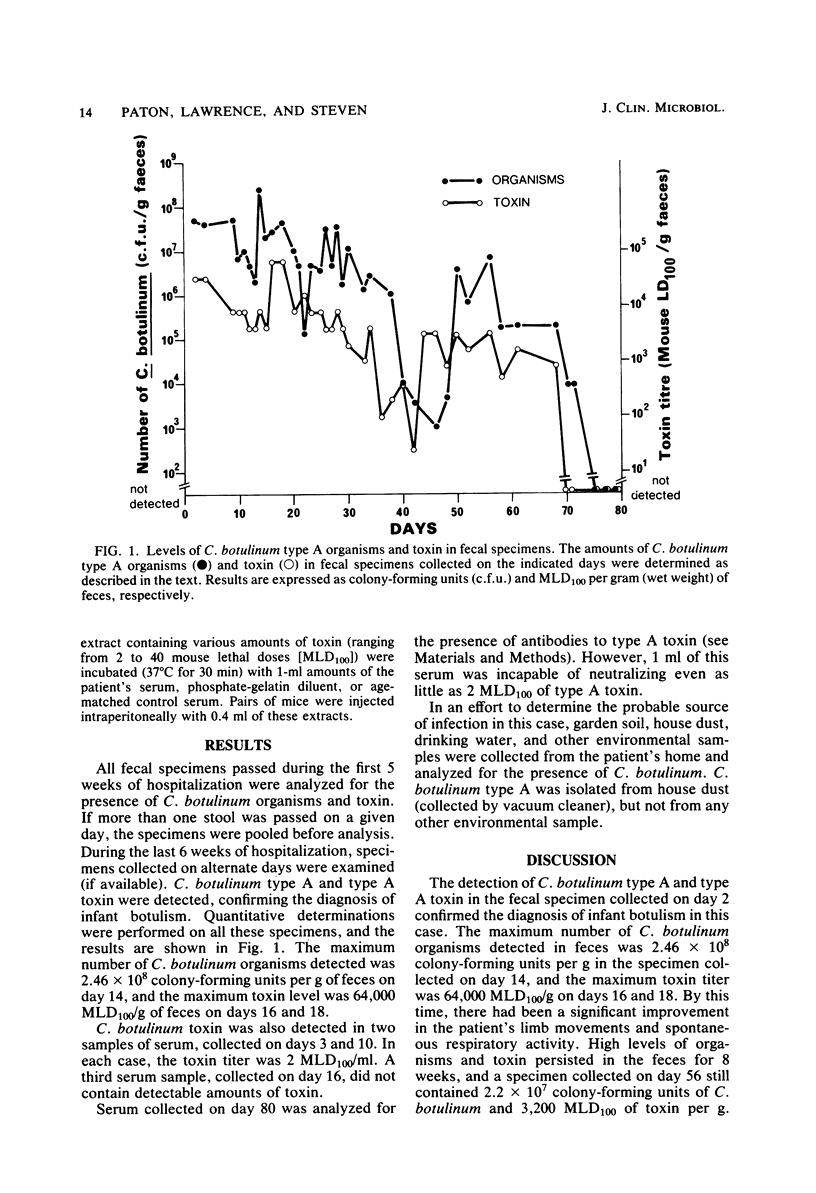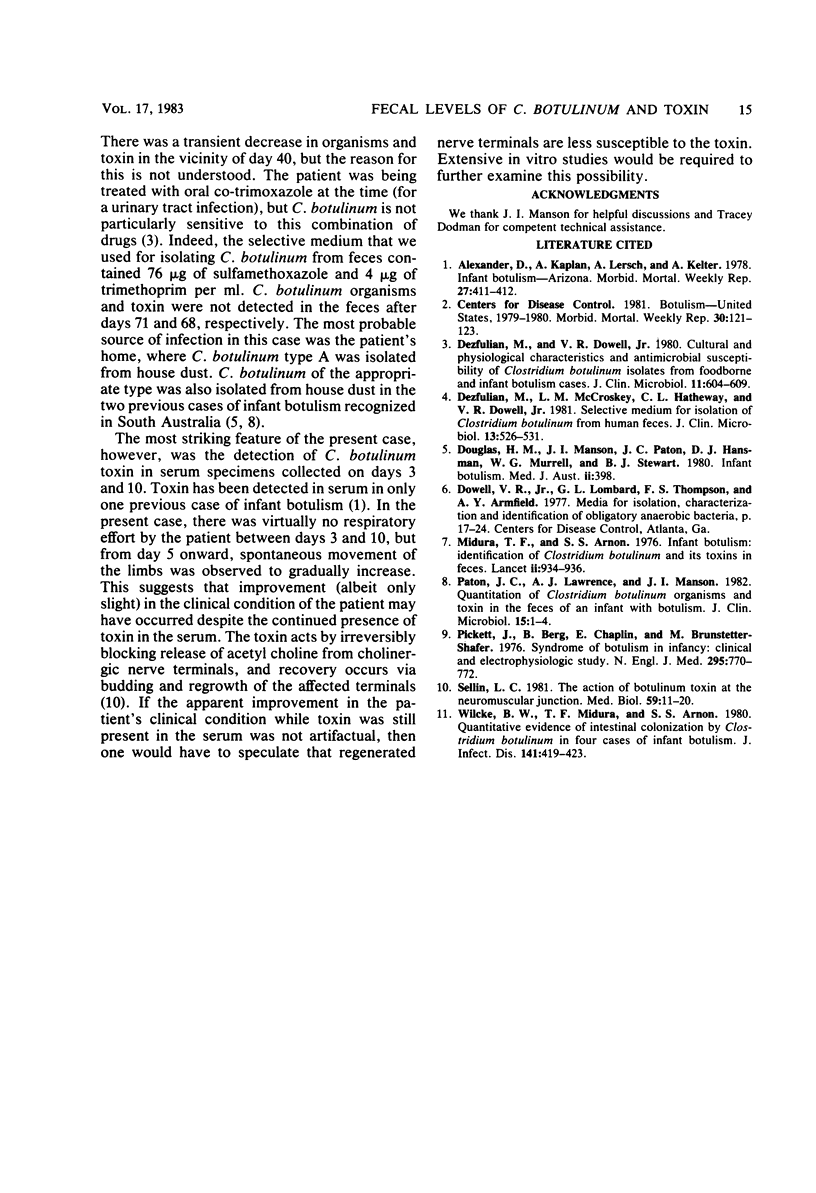Abstract
A 7-week-old boy presented with symptoms and signs characteristic of infant botulism, and the diagnosis was confirmed by the detection of Clostridium botulinum type A organisms and toxin in the feces. The levels of organisms and toxin in the feces were measured throughout the 81-day period in hospital. The maximum levels detected were 2.46 x 10(8) C. botulinum type A colony-forming units and 64,000 mouse 100% lethal doses of type A toxin per g (wet weight) of feces. C. botulinum toxin was also detected in two samples of the patient's serum, collected 3 and 10 days after admission. Improvement in the patient's clinical condition occurred before the levels of organisms and toxin in the feces reached their maxima. A slight improvement may also have occurred while toxin was still present in the serum.
Full text
PDF


Selected References
These references are in PubMed. This may not be the complete list of references from this article.
- Dezfulian M., Dowell V. R., Jr Cultural and physiological characteristics and antimicrobial susceptibility of Clostridium botulinum isolates from foodborne and infant botulism cases. J Clin Microbiol. 1980 Jun;11(6):604–609. doi: 10.1128/jcm.11.6.604-609.1980. [DOI] [PMC free article] [PubMed] [Google Scholar]
- Dezfulian M., McCroskey L. M., Hatheway C. L., Dowell V. R., Jr Selective medium for isolation of Clostridium botulinum from human feces. J Clin Microbiol. 1981 Mar;13(3):526–531. doi: 10.1128/jcm.13.3.526-531.1981. [DOI] [PMC free article] [PubMed] [Google Scholar]
- Douglas H. M., Manson J. I., Paton J. C., Hansman D. J., Murrell W. G., Stewart B. J. Infant botulism. Med J Aust. 1980 Oct 4;2(7):398–398. doi: 10.5694/j.1326-5377.1980.tb131884.x. [DOI] [PubMed] [Google Scholar]
- Midura T. F., Arnon S. S. Infant botulism. Identification of Clostridium botulinum and its toxins in faeces. Lancet. 1976 Oct 30;2(7992):934–936. doi: 10.1016/s0140-6736(76)90894-1. [DOI] [PubMed] [Google Scholar]
- Paton J. C., Lawrence A. J., Manson J. I. Quantitation of Clostridium botulinum organisms and toxin in the feces of an infant with botulism. J Clin Microbiol. 1982 Jan;15(1):1–4. doi: 10.1128/jcm.15.1.1-4.1982. [DOI] [PMC free article] [PubMed] [Google Scholar]
- Pickett J., Berg B., Chaplin E., Brunstetter-Shafer M. A. Syndrome of botulism in infancy: clinical and electrophysiologic study. N Engl J Med. 1976 Sep 30;295(14):770–772. doi: 10.1056/NEJM197609302951407. [DOI] [PubMed] [Google Scholar]
- Sellin L. C. The action of batulinum toxin at the neuromuscular junction. Med Biol. 1981 Feb;59(1):11–20. [PubMed] [Google Scholar]
- Wilcke B. W., Jr, Midura T. F., Arnon S. S. Quantitative evidence of intestinal colonization by Clostridium botulinum in four cases of infant botulism. J Infect Dis. 1980 Apr;141(4):419–423. doi: 10.1093/infdis/141.4.419. [DOI] [PubMed] [Google Scholar]


